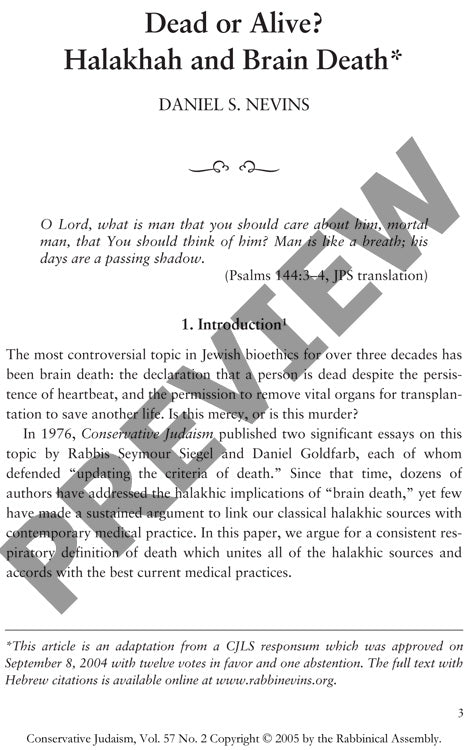Dead or Alive Halakhah and Brain Death
Couldn't load pickup availability
When is a person considered legally dead according to Jewish law? This critical question has profound implications for organ donation and end-of-life care. Through systematic analysis of classical Jewish legal sources and contemporary medical protocols, a clear pattern emerges: Jewish law has consistently employed respiratory rather than cardiac criteria for determining death. The research methodology encompasses comprehensive textual analysis of Talmudic sources (particularly Yoma 85a, Hullin 21a, and related passages), medieval halakhic codes, and current neurological diagnostic standards. The Talmudic requirement to check "until his nose" and the biblical concept of "breath of life" (nishmat hayim) demonstrate the primacy of respiratory function in death determination. Cases involving decapitation and spinal cord severance described in classical sources are distinguished primarily by the victim's inability to breathe rather than neurological damage per se. Analysis of contemporary brain death protocols shows that the apnea test, which confirms permanent cessation of spontaneous respiration, constitutes the definitive diagnostic criterion. Properly conducted brain death diagnosis, including rigorous exclusion of reversible factors followed by comprehensive neurological examination and apnea testing, satisfies traditional halakhic requirements for declaration of death. This finding supports a consistent respiratory definition of death that unifies classical sources with current medical practice, thereby permitting vital organ donation when brain death criteria are met through appropriate protocols. The study resolves a significant controversy in Jewish bioethics by establishing that brain death diagnosis, specifically through verification of respiratory cessation, aligns with established halakhic principles rather than requiring acceptance of new death criteria.

More Information
-
Physical Description
-
Publication Information
Published 2005
ISBN
-
Publication Credits
Daniel Nevins

